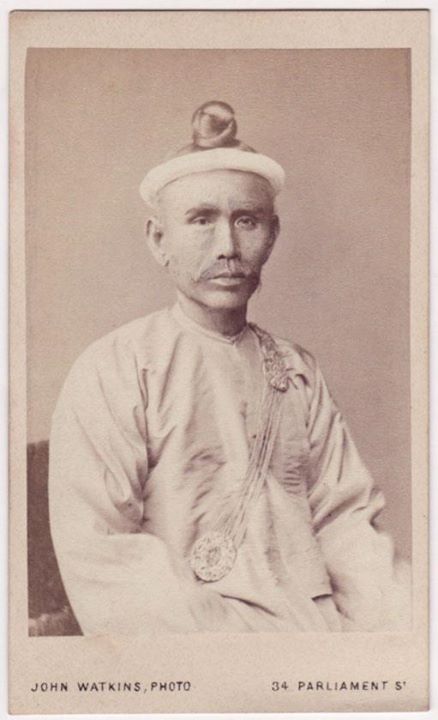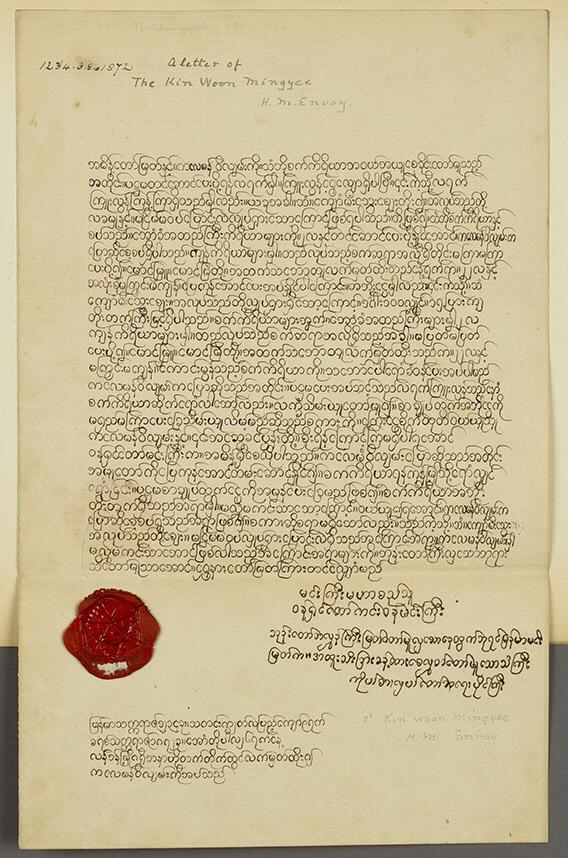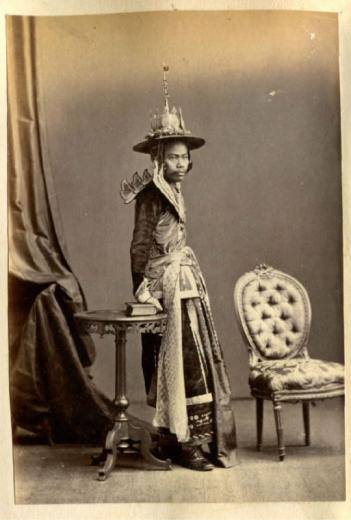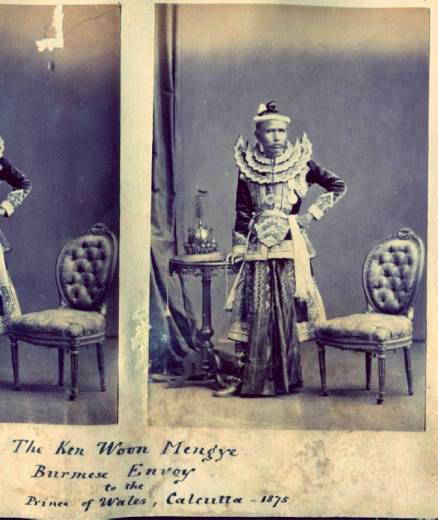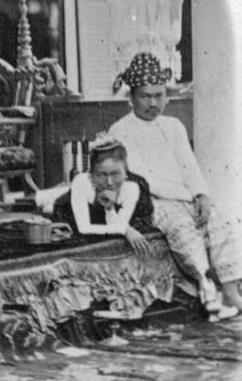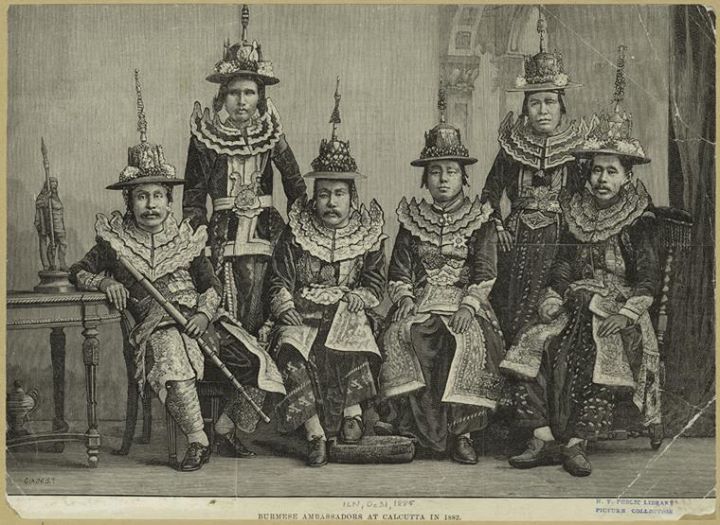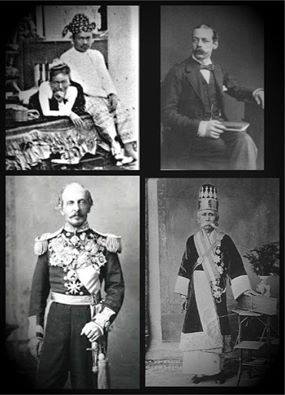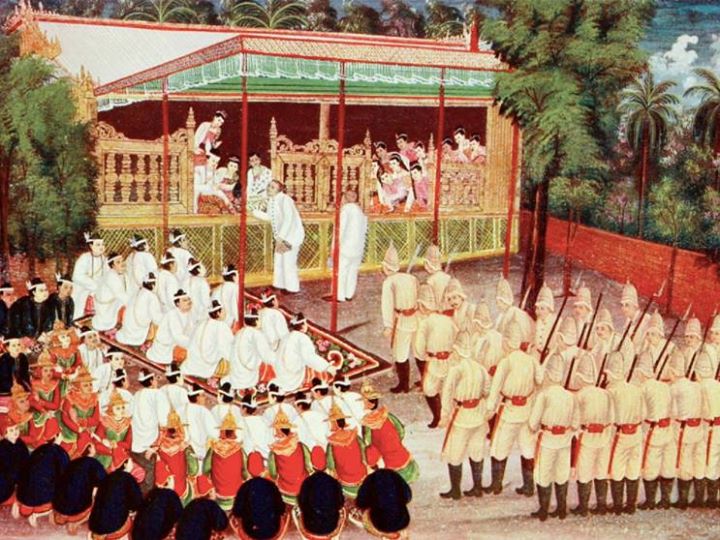Kinwun Mingyi
Kinwun Mingyi
The Kinwun Mingyi U Kaung (3 February 1822 – 30 June 1908) was Burma (Myanmar)’s leading reformer in the 1870s and early 1880s. He was a scholar, diplomat, and the author of numerous works of literature, history, and jurisprudence. Like many in his generation, his vision was of a modern, independent Burma, that would mix the best of the old and the new, importing the latest ideas and technology, whilst also protecting and preserving centuries old traditions. The Kinwun Mingyi...
Read MoreA rare letter from the Kinwun Mingyi to Clement Williams
Clement Williams is a very interesting figure in 19th century Burmese history. He first arrived in Burma in 1858 as an Assistant Surgeon in the British Army and went on to become the (British) Political Agent in Mandalay. He spoke Burmese fluently and impressed King Mindon, who came to regrd him as a friend. Within a year, however, he was replaced by his bitter rival Colonel Sladen. Over the 1870s he lived in Rangoon as a businessman and an agent...
Read MoreThangyet Wun U Myu
This is a rare portrait of the Thangyet Wun U Myu (later styled Mingyi Minhla Maha Sithu Kyaw), a scion of an old family of Ava nobility and was one of the first Burmese to be educated in Paris. He obtained a degree in engineering at the École Centrale des Arts et Manufactures in 1868 and later returned for further study in France in the 1870s. U Myu cheld different posts in Mandalay, leading King Mindon's efforts to build the...
Read MoreFirst Burmese embassy to Europe
On a hot and sticky March morning, the SS Tenasserim, flying the peacock flag of the Burmese kingdom as well as the Union Jack, steamed down the Rangoon River and into the salty waters of the Indian Ocean. It was a new state-of-the-art ship, built in Glasgow for the Henderson passenger line, and came with no less than twenty well-appointed first-class cabins. On board was a delegation from the Court of Ava, led by the scholarly Kinwun Mingyi, a minister...
Read MoreKinwun Mingyi’s visit to Calcutta in 1875
This very rare photograph of the Kinwun Mingyi was taken during his visit to Calcutta in 1875 at s a turning-point in Anglo-Burmese relations. The ostensible reason for the trip was to meet the Prince of Wales (the future King Edward VII) who was then on a tour of the Indian Empire. But the Kinwun's trip was also a last-ditch attempt to repair rapidly deteriorating relations with the British. By 1875, British interference in Burmese internal politics was growing by...
Read MoreThe vision of King Thibaw’s government
This is a rare early photograph of King Thibaw and Queen Supayalat. The government of King Thibaw came to power in November 1878. Contrary to popular views, it was a highly reformist government at first, led by men such as the Kinwun Mingyi and the Yaw Atwinwun, as well as several who had returned from studies in Europe. They were eager to modernize, reach out to the West, and preserve Burma's independence, but their ambitious plans for political and economic...
Read MoreMyoza of Kyaukmyaung’s visit to Simla
In April 1882, a Burmese embassy led by the Sorbonne-educated diplomat the Myoza of Kyaukmyaung arrived in Simla for talks with Lord Ripon, Viceroy of India. It was the last serious effort to avoid the war and the annexation of Burma that would soon follow. The Myoza of Kyaukmyaung (U Shwe O, seated second from right) was then an Atwinwun, and working desperately to protect his country's independence whilst also trying to balance his relations with the two most powerful...
Read MoreThe ultimatum that led to war
On 22 October 1885 Lord Dufferin the Viceroy of India issued an ultimatum calling on the government of King Thibaw to place its foreign relations under the permanent control of the British Indian Empire. The formal aim of the ultimatum was a resolution of the dispute with the Bombay-Burmah Trading Company but the real intent was to permanently end Burmese sovereignty. The British were increasingly worried about prospect of closer Franco-Burmese relations and attracted to the idea of Burma as...
Read MoreAfter the Burmese Kingdom fell into British Hands
From 1883-85, the reformists around the king, led by the Kinwun Mingyi, the Yaw Atwinwun, and the Wetmasut Wundauk, were unable to implement the sweeping changes they felt necessary to save the kingdom. Conservatives, supported by factions within the army and the royal establishment, had pushed back and halted many of the constitutional and fiscal reforms originally set in motion. Fast mounting external and domestic challenges, compounded by worsening economic conditions, fighting in the Kachin Hills, two successive years of...
Read More